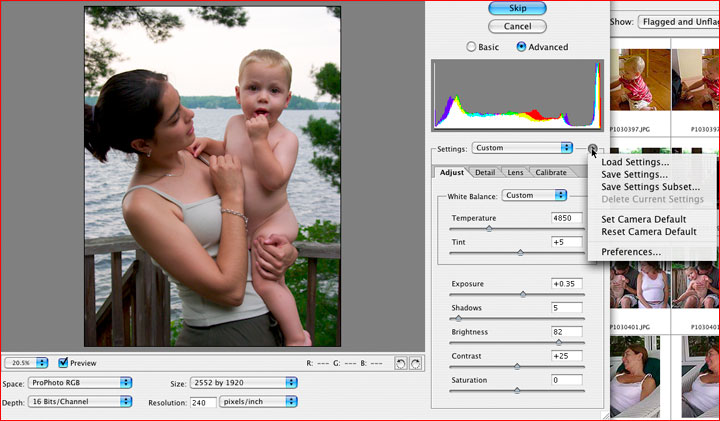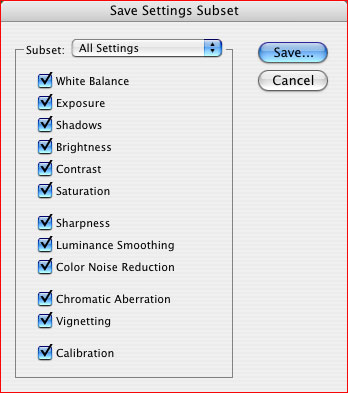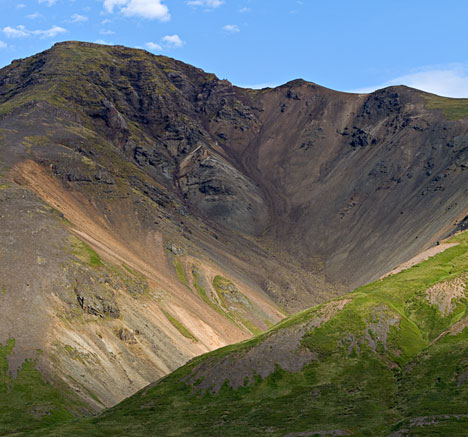I’ve been preaching the gospel of raw files now for a couple of years. My tutorial onUnderstanding Raw Filesis just one instance, and other essays such asExpose (to the) Rightelaborate on why digital photographers are well advised to shoot in raw mode and why.
But photographers, like most people, can be both lazy and gullible. Shooting jpg files is a lot easier than shooting raw, they are told, but there are unfortunately numerous people giving advice on web forums that simply don’t properly understand what lies behind the technology of digital image capture, and more importantly the tools that are now available. They either think that shooting digital is much like film, or they extrapolate from the own limited needs and experience to what others should do.
One of the frequent arguments that I’ve read is that working with raw files takes too long, or is too much work. For anyone that cares about their photographs this simply isn’t the case. A powerful program likePhotoshop CSand the built-inCamera Rawconverter along withFile Browserare tremendously powerful tools for the digital photographer. Indeed I don’t think it an exaggeration to say that for any photographer above the level of snapshooter, this istheapplication needed to process both your raw files and your final images.
That isn’t to say that there aren’t other powerful raw conversion programs.Phase One’s Capture Oneis certainly a favourite of many pros and advanced amateurs, and has much to recommend it,ifyour camera is one of the ones that it supports. But one of the strengths of Adobe’sCamera Rawis that it supports more than 60 different digital cameras, including models from almost every camera maker. And Adobe is committed to continuously upgrading the program with support for new camera models as they are released.
But, working with raw files efficiently is not as easy as it looks, or even as easy as some photographers might want it to be. Different photographers have radically different needs. The fine art photographer that has 50 frames to review, convert and process at the end of a weekend’s shoot has no idea what a wedding photographer who comes back that same day with 1,500 frames and a deadline to deal with has to cope with. Fortunately though,Camera Rawcan provide both individuals as well as most people in between with the tools necessary to get the job done efficiently and with the highest possible quality.
But there is a learning curve to working with any powerful and flexible tool, andCamera Rawis nothing if not that. Adobe’s documentation isadequate, but I use that word charitably. To get up to speed on this part ofPhotoshop CSuntil now one simply has had to put in the miles, trying all of the knobs and levers to see what they do. This isn’t everyone’s preferred way of learning though, and still it doesn’t tell you much aboutwhythings should be done in a certain way.
As of August, 2004 there is another way. Highly regarded authorBruce Fraserhas just publishedReal World Camera Raw with Adobe Photoshop CS. The publisher is fromPeachpit Pressand the ISBN number is 0-321-27878-X. The link on this page is toAmazon.com, but any bookseller should be able to order it for you if they don’t have it in stock yet.
________________________________________________________________________

Figure 1
Photoshop CS showing the File Browser
________________________________________________________________________
RWCR
RWCR, as I’ll call it from hereon, is a must-have for several reasons. Firstly, it describes in detail every major and minor function ofCamera Rawand how it integrates into and functions with Photoshop’s File Browser. Secondly, and possibly even more importantly,RWCRexplainswhyit does what it does. I found this to be one of the most valuable aspect of the book. Photographers who care about the quality of their work want to knowwhythey are doing what they’re doing, because when you understand this you are better able to utilize the tools at hand for your own particular needs.
For example, do you know that Camera Raw works on files natively in theProPhotocolour space, and that this is the widest colour space available. Do you know that corrections made to your raw images in Camera Raw are done to the linear file rather than after it’s been gamma corrected? If you didn’t know this, or even what this means, thenRWCRis a must have, because all of this andmoreis explained in clear and comprehensive detail.
________________________________________________________________________

Figure 2
Camera Raw’s main screen
More
What is the "more" that I mentioned? How about batch files? Did you know that you can create automated batch capability for converting an entire directory of files from your camera’s raw format to TIFFs, JPGs, PSDs or any other file format you choose? Were you aware thatCamera Rawcontains generic profiles of all of the cameras that it supports and that based on these you can create the equivalent of custom profiles for your specific camera?
What about removing chromatic aberration, reducing vignetting and performing colour noise reduction? All of these can not only be done as part of your raw file conversion workflow, but also saved as custom configuration files for future use. Below inFigure #3you see just a few of the settings that can be each or in combination saved as custom processing configuration files.
Just as important as discovering what each ofCamera Raw‘s controls does, and why, Bruce provides a clear explanation of the proper order in which they should be used for optimum efficiency and image quality.

Figure 3
________________________________________________________________________
Criticisms
There isn’t that much not to enjoy about this book. The subject matter is covered in detail and with clarity. The book feels a bit as if it could have used one more round of editing though. Some subjects are repeated more than might be necessary for most readers. Also, the photographic illustrations don’t always illustrate their point as clearly as one might wish. Finally, and on a minor note, the copyright notice is given as 2005, though the book was first made available in late July, 2004; something that is bound to confuse some future historian of digital imaging.
________________________________________________________________________
Cleft. Iceland, July 2004
Contax 645 with Kodak DCS Proback and Zeiss Sonnar 210mm f/4 lens
Processed with Camera Raw
Conclusion
If you’re currently shooting in raw mode and usingCamera RawinPhotoshop CSyou may wonder whether buying a book on how to use what you already feel you know is a good investment. Trust me on this! It is, and after just a couple of hours with RWCR you’ll marvel at your increased efficiency as well as improved technique. And, if you’re currently shooting JPG files, this may be the book that finally explains the compromise that you’re making and why you should consider making shooting raw files part of your photographic workflow.
Highly recommended. In fact, this book is a must.
________________________________________________________________________
You May Also Enjoy...
Cottonwood_Cove_site_3
Dali Rock© Miles HeckerCLICK ABOVE IMAGE TO SEE GOOGLE MAP LOCATIONSEASONS The Coyote Buttes area is typical of the high southwestern desert. Summer temperatures often


